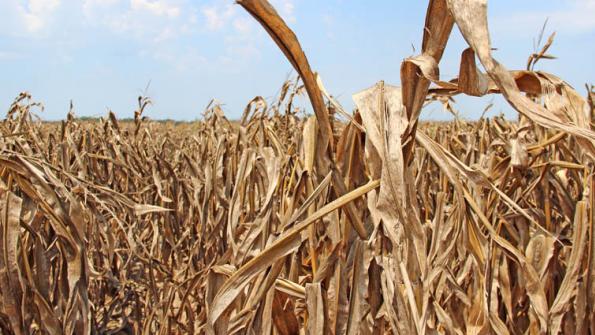
Federal crop insurance policies getting lot of attention in 2012 drought
2012 has been one of the hottest and driest years on record, especially in the Midwest Corn Belt where farmers employ little irrigation because they’ve been able to rely on timely rainfall. Not since 1988 have corn and growers in the heartland faced a growing season like this.
August 31, 2012

For years, many farmers in the Midwest signed up for federal crop insurance coverage, took the papers and struck them in a file folder or drawer and never looked at them again. But not this year.
“We’re working with farmers who have never filed a crop insurance claim before,” says Tad Mozena, vice president – national insurance manager for RaboAgInsurance Services. “There is a high level of anxiety out there right now.”
As most people know, 2012 has been one of the hottest and driest years on record, especially in the Midwest Corn Belt where farmers employ little irrigation because they’ve been able to rely on timely rainfall. Not since 1988 have corn and growers in the heartland faced a growing season like this.
Mozena, interviewed at the Farm Progress Show in Boone, Iowa, said crop insurance providers are projecting federal crop insurance claims could reach $22 billion in 2012, or double what they were following one of the most severe droughts ever in the Southwest in 2011.
Part of the reason for that is that federal crop insurance is a widely accepted practice in the Midwest compared to other regions of the country. Farmers enjoy relatively low premium rates because the loss ratio has been favorable in the Corn Belt in recent years.
Midwest corn and soybean producers have also taken to crop revenue insurance in record numbers because of the price protection the coverage offers. Mozena estimates 90 percent of the farmers who have signed up for federal crop insurance in the Midwest have revenue assurance policies. That could be a very good thing in 2012, he says.
“I’ve talked to farmers whose yields have ranged from 30 bushels to 180 bushels an acre, sometimes on the same farm,” says Mozena, referring to farmers in Iowa where the corn harvest has gotten off to an unusually early start after last spring’s unusually warm weather.
Mozena said crop insurance providers are working closely with their customers to make sure their losses are documented. “In the past, we’ve had to send out reminders to growers to report their acres and yields. This year, farmers are calling us to make sure they’re doing everything they can to protect their claim.”
The crop insurance industry has also been taking steps to assure growers that ample reserves exist to pay their claims. “Most of the authorized insurance providers have reinsurance agreements with much larger insurance companies to help with the payouts,” he noted. “Those companies are very diversified and have strong reserves.”
About the Author(s)
You May Also Like





